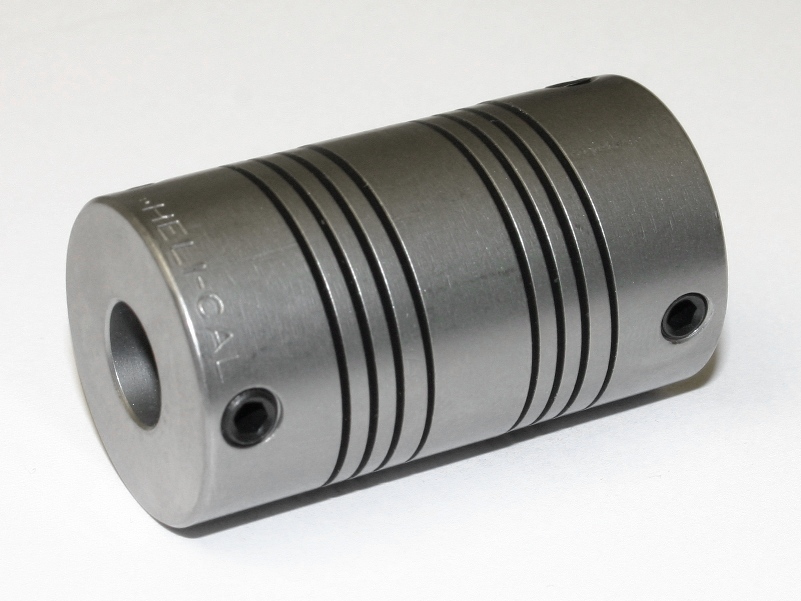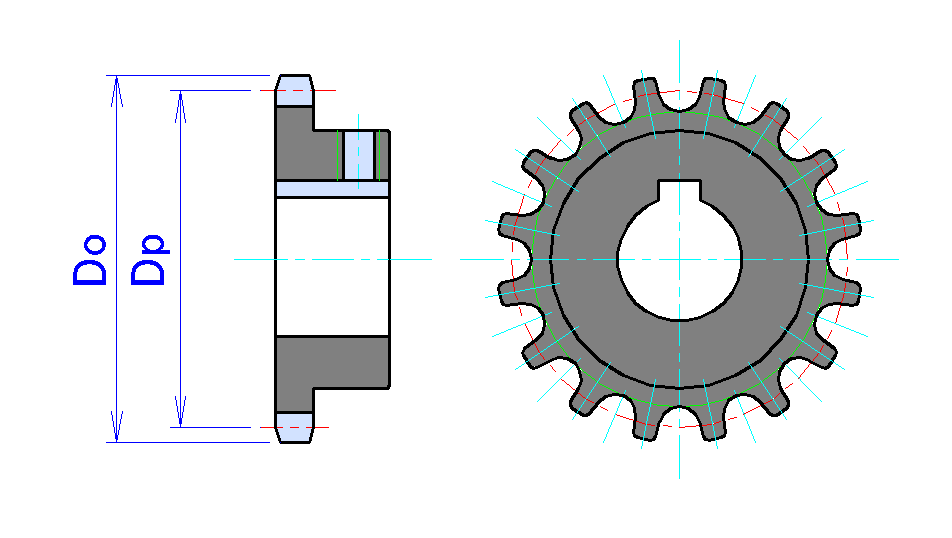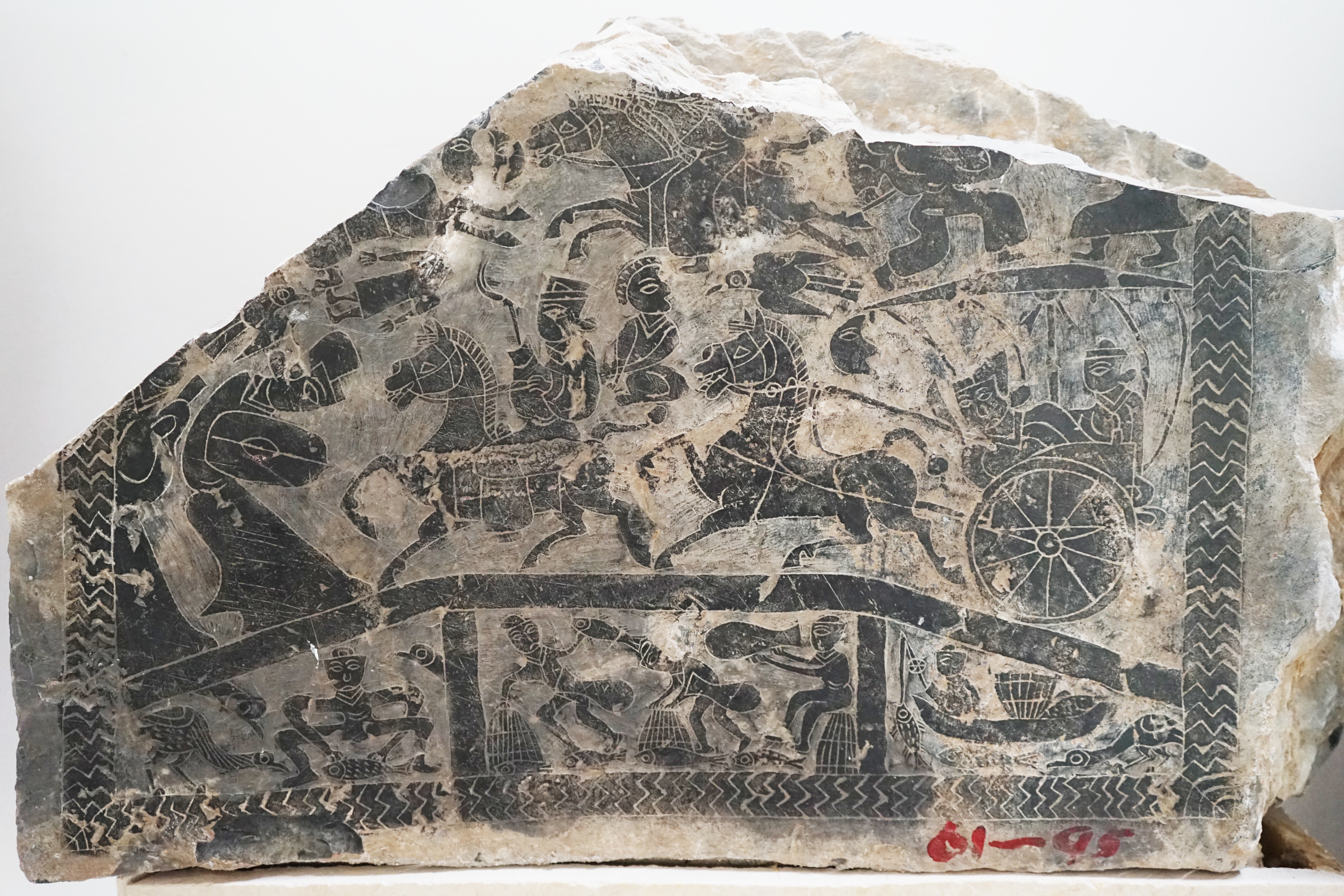|
Torque Limiter
A torque limiter is an automatic device that protects mechanical equipment, or its work, from damage by mechanical overload. A torque limiter may limit the torque by slipping (as in a friction plate slip-clutch), or uncouple the load entirely (as in a shear pin). The action of a torque limiter is especially useful to limit any damage due to crash stops and jams. Torque limiters may be packaged as a shaft coupling or as a hub for sprocket or sheave. A torque limiting device is also known as an overload clutch. Disconnect types Disconnect types will uncouple the drive, with little or no residual torque making its way to the load. They may reset automatically or manually Shear pin {{main, Shear pin A shear pin type sacrifices a mechanical component, the pin, to disconnect the shafts. The use of shear pins as torque limiters has been well known since at least the early 20th century.A. L. De Leeuw, Methods of machine tool design, American Machinist Vol. 57, No. 11 (Sept. 14, 1922)pag ... [...More Info...] [...Related Items...] OR: [Wikipedia] [Google] [Baidu] |
Spring Torque Limiter Make Ringspann
Spring(s) may refer to: Common uses * Spring (season), a season of the year * Spring (device), a mechanical device that stores energy * Spring (hydrology), a natural source of water * Spring (mathematics), a geometric surface in the shape of a helically coiled tube * Spring (political terminology), often used to name periods of political liberalization * Springs (tide), in oceanography, the maximum tide, occurs twice a month during the full and new moon Places * Spring (Milz), a river in Thuringia, Germany * Spring, Alabel, a barangay unit in Alabel, Sarangani Province, Philippines * Șpring, a commune in Alba County, Romania * Șpring (river), a river in Alba County, Romania * Springs, Gauteng, South Africa * Springs, the location of Dubai British School, Dubai United States * Springs, New York, a part of East Hampton, New York * Springs, Pennsylvania, an unincorporated community * Spring, Texas, a census-designated place * Spring District, neighborhood in Bellevue, Was ... [...More Info...] [...Related Items...] OR: [Wikipedia] [Google] [Baidu] |
Torque
In physics and mechanics, torque is the rotational equivalent of linear force. It is also referred to as the moment of force (also abbreviated to moment). It represents the capability of a force to produce change in the rotational motion of the body. The concept originated with the studies by Archimedes of the usage of levers, which is reflected in his famous quote: "''Give me a lever and a place to stand and I will move the Earth''". Just as a linear force is a push or a pull, a torque can be thought of as a twist to an object around a specific axis. Torque is defined as the product of the magnitude of the perpendicular component of the force and the distance of the line of action of a force from the point around which it is being determined. The law of conservation of energy can also be used to understand torque. The symbol for torque is typically \boldsymbol\tau, the lowercase Greek letter ''tau''. When being referred to as moment of force, it is commonly denoted by . In ... [...More Info...] [...Related Items...] OR: [Wikipedia] [Google] [Baidu] |
Clutch
A clutch is a mechanical device that engages and disengages power transmission, especially from a drive shaft to a driven shaft. In the simplest application, clutches connect and disconnect two rotating shafts (drive shafts or line shafts). In these devices, one shaft is typically attached to an engine or other power unit (the driving member), while the other shaft (the driven member) provides output power for work. Typically the motions involved are rotary, but linear clutches also exist. In a motor vehicle, the clutch acts as a mechanical linkage between the engine and transmission, and briefly disconnects, or separates the engine from the transmission system. This disconnects the drive wheels whenever the clutch pedal is depressed, allowing the driver to smoothly change gears. In a torque-controlled drill, for instance, one shaft is driven by a motor, and the other drives a drill chuck. The clutch connects the two shafts so they may be locked together and spin at the ... [...More Info...] [...Related Items...] OR: [Wikipedia] [Google] [Baidu] |
Shear Pin
{{unreferenced, date=September 2018 A shear pin is a mechanical detail designed to allow a specific outcome to occur once a predetermined force is applied. It can either function as a safeguard designed to break to protect other parts, or as a conditional operator that will not allow a mechanical device to operate until the correct force is applied. Shear pins as safeguards In the role of a mechanical safeguard, a shear pin is a safety device designed to shear in the case of a mechanical overload, preventing other, more expensive or less-easily replaced parts from being damaged. As a mechanical sacrificial part, it is analogous to an electric fuse. They are most commonly used in drive trains, such as a snow blower's auger or the propellers attached to marine engines. Another use is in pushback bars used for large aircraft. In this device, shear pins are frequently used to connect the "head" of the towbar – the portion that attaches to the aircraft – to the main shaft of t ... [...More Info...] [...Related Items...] OR: [Wikipedia] [Google] [Baidu] |
Coupling
A coupling is a device used to connect two shafts together at their ends for the purpose of transmitting power. The primary purpose of couplings is to join two pieces of rotating equipment while permitting some degree of misalignment or end movement or both. In a more general context, a coupling can also be a mechanical device that serves to connect the ends of adjacent parts or objects. Couplings do not normally allow disconnection of shafts during operation, however there are torque limiter, torque-limiting couplings which can slip or disconnect when some torque limit is exceeded. Selection, installation and maintenance of couplings can lead to reduced maintenance time and maintenance cost. Uses Shaft couplings are used in machinery for several purposes. A primary function is to transfer power from one end to another end (ex: motor transfer power to pump through coupling). Other common uses: * To alter the vibration characteristics of rotating units * To connect the driving ... [...More Info...] [...Related Items...] OR: [Wikipedia] [Google] [Baidu] |
Sprocket
A sprocket, sprocket-wheel or chainwheel is a profiled wheel with teeth that mesh with a chain, track or other perforated or indented material. The name 'sprocket' applies generally to any wheel upon which radial projections engage a chain passing over it. It is distinguished from a gear in that sprockets are never meshed together directly, and differs from a pulley in that sprockets have teeth and pulleys are smooth except for timing pulleys used with toothed belts. Sprockets are used in bicycles, motorcycles, tracked vehicles, and other machinery either to transmit rotary motion between two shafts where gears are unsuitable or to impart linear motion to a track, tape etc. Perhaps the most common form of sprocket may be found in the bicycle, in which the pedal shaft carries a large sprocket-wheel, which drives a chain, which, in turn, drives a small sprocket on the axle of the rear wheel. Early automobiles were also largely driven by sprocket and chain mechanism, a practice la ... [...More Info...] [...Related Items...] OR: [Wikipedia] [Google] [Baidu] |
Sheave
A sheave () or pulley wheel is a grooved wheel often used for holding a belt, wire rope, or rope and incorporated into a pulley. The sheave spins on an axle or bearing inside the frame of the pulley. This allows the wire or rope to move freely, minimizing friction and wear on the cable. Sheaves can be used to redirect a cable or rope, lift loads, and transmit power. The words ''sheave'' and ''pulley'' are sometimes used interchangeably. Adjustable pulley A sheave can also refer to a pulley which has an adjustable operating diameter for use with a mechanical belt. This is accomplished by constructing the pulley out of several pieces. The two main "halves" of the pulley can be moved closer together or farther apart, thus altering the operational diameter. The usual construction is some sort of locking collar or set screws to secure the components, one half with a threaded central shaft and one half with a threaded center. By rotating the components, one can "screw" the parts ... [...More Info...] [...Related Items...] OR: [Wikipedia] [Google] [Baidu] |
Planetary Gearset
An epicyclic gear train (also known as a planetary gearset) consists of two gears mounted so that the center of one gear revolves around the center of the other. A carrier connects the centers of the two gears and rotates the planet and sun gears mesh so that their pitch circles roll without slip. A point on the pitch circle of the planet gear traces an epicycloid curve. In this simplified case, the sun gear is fixed and the planetary gear(s) roll around the sun gear. An epicyclic gear train can be assembled so the planet gear rolls on the inside of the pitch circle of a fixed, outer gear ring, or ring gear, sometimes called an ''annular gear''. In this case, the curve traced by a point on the pitch circle of the planet is a hypocycloid. The combination of epicycle gear trains with a planet engaging both a sun gear and a ring gear is called a ''planetary gear train''.J. J. Uicker, G. R. Pennock and J. E. Shigley, 2003, ''Theory of Machines and Mechanisms,'' Oxford University Pr ... [...More Info...] [...Related Items...] OR: [Wikipedia] [Google] [Baidu] |
Transmission (mechanics)
Propulsion transmission is the mode of transmitting and controlling propulsion power of a machine. The term ''transmission'' properly refers to the whole drivetrain, including clutch, gearbox, prop shaft (for rear-wheel drive vehicles), differential, and final drive shafts. In the United States the term is sometimes used in casual speech to refer more specifically to the gearbox alone, and detailed usage differs. The transmission reduces the higher engine speed to the slower wheel speed, increasing torque in the process. Transmissions are also used on pedal bicycles, fixed machines, and where different rotational speeds and torques are adapted. Often, a transmission has multiple gear ratios (or simply "gears") with the ability to switch between them as the speed varies. This switching may be done manually (by the operator) or automatically (by a control unit). Directional (forward and reverse) control may also be provided. Single-ratio transmissions also exist, which simply cha ... [...More Info...] [...Related Items...] OR: [Wikipedia] [Google] [Baidu] |
Fishing Reel
A fishing reel is a hand- cranked reel used in angling to wind and stow fishing line, typical mounted onto a fishing rod, but may also be used to retrieve a tethered arrow when bowfishing. Modern recreational fishing reels usually have fittings aiding in casting for distance and accuracy, as well as controlling the speed and tension of line retrieval to avoid line snap and hook dislodgement. Fishing reels are traditionally used in angling and competitive casting. They are typically attached near the handle of a fishing rod, though some specialized reels with pressure sensors for immediate retrieval are equipped on downrigger systems which are mounted directly to an ocean-going sport boat's gunwales or transoms and are used for "deep drop" and trolling. The earliest fishing reel was invented in China at least since the Song dynasty, as shown by detailed illustration of an angler fishing with reel from Chinese paintings and records beginning about 1195 AD, although sporadic text ... [...More Info...] [...Related Items...] OR: [Wikipedia] [Google] [Baidu] |
Torque Converter
A torque converter is a type of fluid coupling that transfers rotating power from a prime mover, like an internal combustion engine, to a rotating driven load. In a vehicle with an automatic transmission, the torque converter connects the power source to the load. It is usually located between the engine's flexplate and the transmission. The equivalent location in a manual transmission would be the mechanical clutch. The main characteristic of a torque converter is its ability to increase torque when the output rotational speed is so low that it allows the fluid coming off the curved vanes of the turbine to be deflected off the stator while it is locked against its one-way clutch, thus providing the equivalent of a reduction gear. This is a feature beyond that of the simple fluid coupling, which can match rotational speed but does not multiply torque and thus reduces power. Hydraulic systems By far the most common form of torque converter in automobile transmissions is the hydr ... [...More Info...] [...Related Items...] OR: [Wikipedia] [Google] [Baidu] |
Mechanisms (engineering)
Mechanism may refer to: *Mechanism (engineering), rigid bodies connected by joints in order to accomplish a desired force and/or motion transmission *Mechanism (biology), explaining how a feature is created *Mechanism (philosophy), a theory that all natural phenomena can be explained by physical causes *Mechanism (sociology), a theory that all social phenomena can be explained by the existence of a deterministic mechanism * "The Mechanism", song by Disclosure * ''The Mechanism'' (TV series), a Netflix TV series See also *Machine *Machine (mechanical) *Linkage (mechanical) *Mechanism design, the art of designing rules of a game to achieve a specific outcome *Mechanism of action, the means by which a drug exerts its biological effects *Defence mechanism, unconscious mechanisms aimed at reducing anxiety *Reaction mechanism, the sequence of reactions by which overall chemical change occurs *Antikythera mechanism, an ancient Greek analog computer *Theory of operation A theory of op ... [...More Info...] [...Related Items...] OR: [Wikipedia] [Google] [Baidu] |





